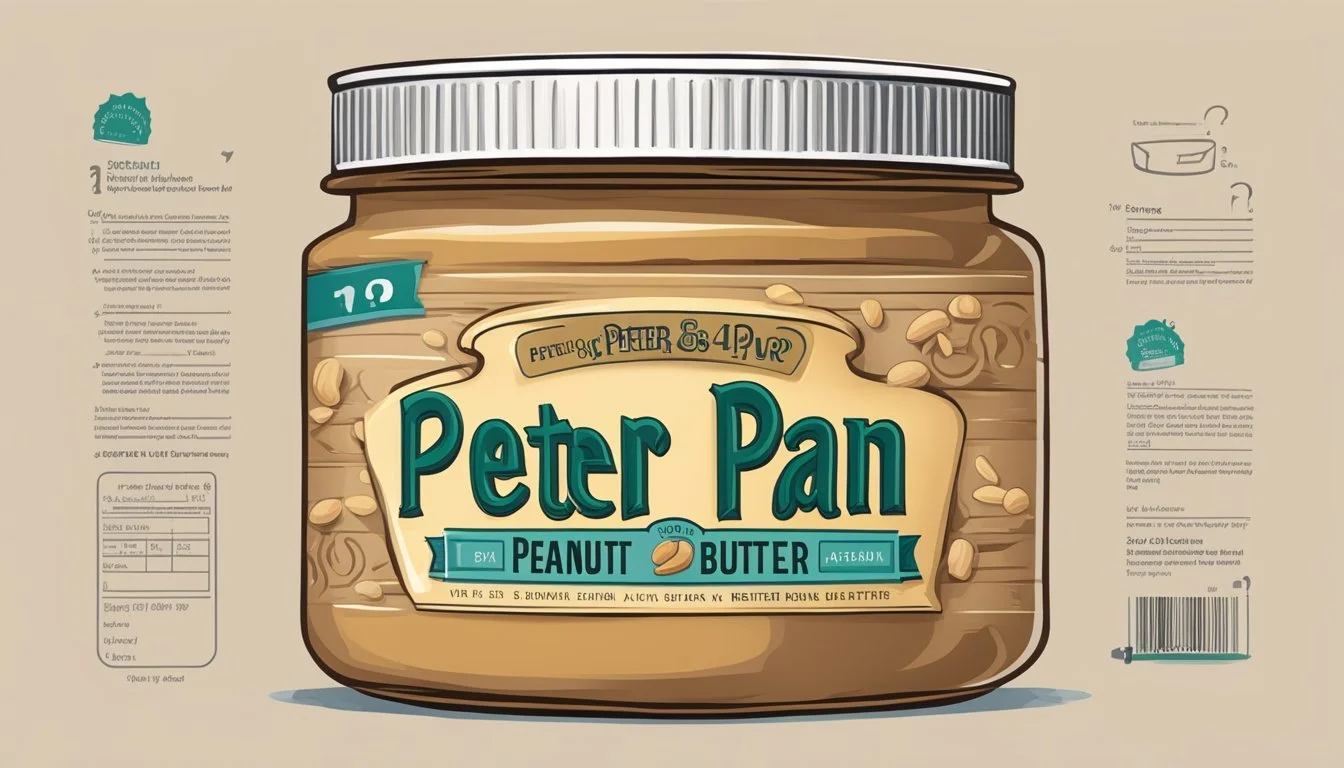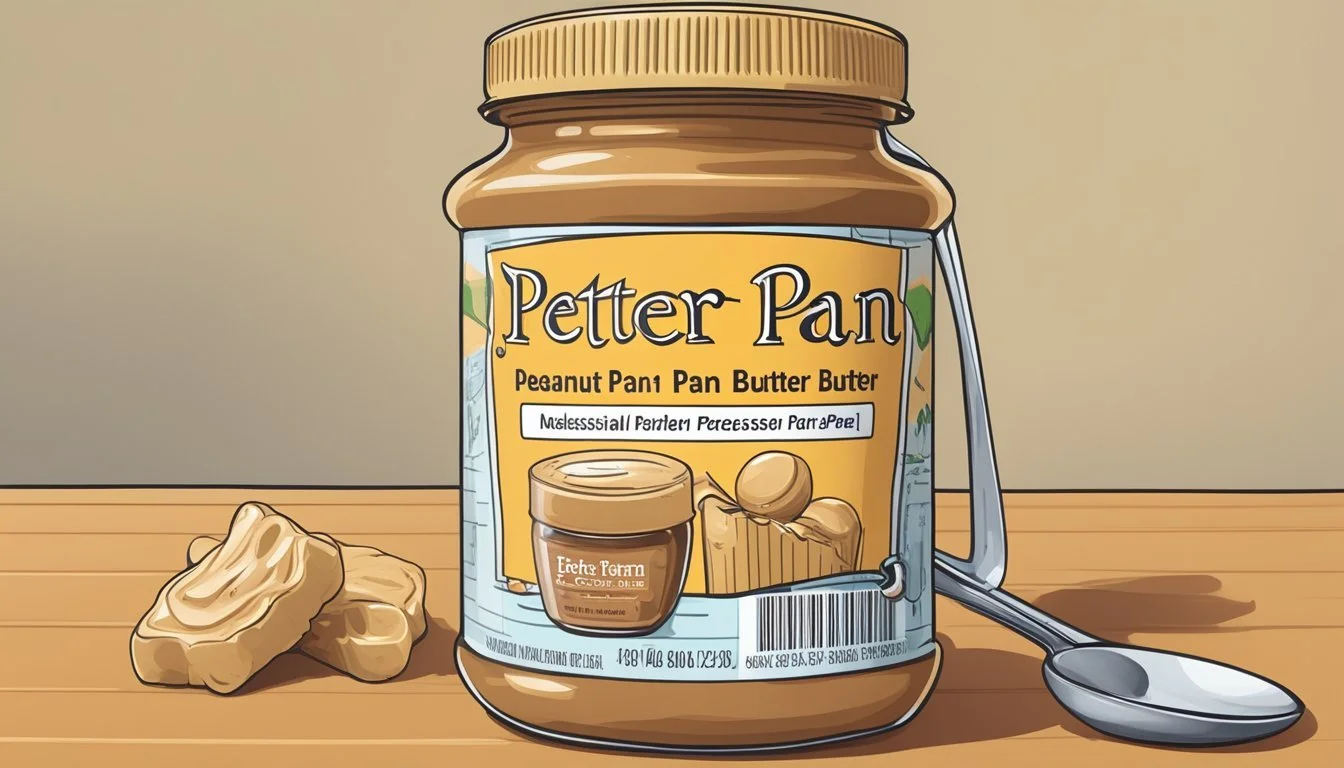How Much Peter Pan Peanut Butter Per Day Is Too Much?
Understanding Safe Consumption Limits
Peanut butter, a staple in many households, is a spread beloved for its rich flavor and high protein content. Peter Pan peanut butter, similar to other brands like Jif and Skippy, provides a source of healthy fats and protein derived from peanuts. However, it contains added ingredients such as sugar, oil, and salt, which can affect its nutritional profile. Moderation is key when consuming peanut butter to reap its health benefits without overindulging in these additions.
The question of how much Peter Pan peanut butter is too much hinges on individual dietary needs and health guidelines. For instance, excessive consumption of sodium and added sugars can lead to health complications over time. Considering that a single tablespoon of peanut butter can contain around 147 mg of sodium, and Peter Pan's Honey Roast flavor is particularly high in sugar, it's crucial to understand and adhere to recommended daily intakes. Nutritionists suggest that while peanut butter can be part of a healthy diet, it should be consumed in moderation, ensuring that total daily sugar and sodium intakes stay within recommended limits.
Nutritional Profile of Peter Pan Peanut Butter
Peter Pan Peanut Butter provides a combination of macronutrients and micronutrients, making it a source of energy and essential vitamins and minerals often associated with peanuts. Understanding the nutritional content can guide one's daily consumption.
Calories and Macros
For every two-tablespoon serving of Peter Pan Creamy Peanut Butter, one consumes approximately 200 calories. The macronutrient breakdown is as follows:
Protein: 8 grams
Total Fat: 16 grams
Saturated Fat: Not specified in the search results
Carbohydrates: 7 grams
Fiber: 2 grams
Sugar: 3 grams
Caloric content and macronutrient balance are vital to consider when determining portion sizes appropriate for different dietary needs.
Vitamins and Minerals
Peter Pan Peanut Butter is not a significant source of vitamins D, A, and C, with a 0% Daily Value (DV) contribution reported per serving. However, it does provide some minor contributions to the daily intake of other important micronutrients:
Iron: 2% DV
Potassium: 4% DV
While it may not be a rich source of many vitamins, minerals such as iron and potassium included in Peter Pan Peanut Butter contribute to the overall nutritional intake.
Comparing Saturated and Healthy Fats
Peter Pan Peanut Butter's fat content is predominantly from nuts, which typically includes a mix of saturated and unsaturated fats. The unsaturated fats, known as healthy fats, can have positive effects on heart health when consumed in moderation. Saturated fats should generally be consumed in lower quantities, and specific proportions within the product are necessary to assess health benefits accurately. Peanuts are also known for containing other beneficial substances like Vitamin E, niacin, Vitamin B6, folate, copper, manganese, and omega-6 fatty acids, which contribute to overall health when included as part of a balanced diet.
Health Considerations
When discussing the health considerations of consuming Peter Pan peanut butter, one must pay attention to its impact on heart disease, cholesterol levels, weight management, and potential allergies or intolerances.
Heart Disease and Cholesterol
Peter Pan peanut butter contains 16 grams of fat per serving with a portion of it being saturated fat, which is associated with high cholesterol levels. As peanut butter has a high amount of omega-6 fatty acids relative to omega-3s, an imbalance may lead to health issues such as inflammation, oxidative stress, and an increased risk of heart disease and high blood pressure. It's imperative for individuals to monitor their intake to avoid exacerbating these risks.
Weight Management
A standard serving of Peter Pan peanut butter also possesses a substantial calorie count, which can contribute to weight gain if consumed in excess without appropriate portion control. Due to its added sugar and oil, it may not always align with weight loss or management diets. Individuals should be diligent in moderating their consumption to maintain a balanced calorie intake and prevent the onset of obesity.
Allergies and Intolerances
Consumers should also be aware of potential allergies or intolerances to ingredients found in Peter Pan peanut butter. Ingredients such as added salts and hydrogenated oils can cause adverse reactions in some individuals, including but not limited to rashes and other allergic responses. The presence of added sugar also has implications for those with specific dietary intolerances. It's crucial to assess one's sensitivity to these components before regularly including Peter Pan peanut butter in the diet.
Daily Consumption Guidelines
When considering how much Peter Pan peanut butter to consume daily, it's important to adhere to serving size recommendations and be aware of the potential for excess intake of certain nutrients.
Recommended Serving Size
The standard serving size for peanut butter, including the Peter Pan brand, is 2 tablespoons. This serving typically contains:
Approximately 188 calories
Around 16 grams of fats, predominantly heart-healthy monounsaturated fats
Approximately 7 grams of protein
Roughly 3 grams of fiber
Consuming within these parameters can ensure a balance between nutrient intake and calorie control.
Identifying Excess Intake
Excessive consumption of peanut butter may lead to an intake of too many calories and higher amounts of fats, sodium, and sugars, which could contribute to health issues if not moderated. Here are specifics to watch for:
Sodium: Peter Pan peanut butter with added salt contains about 147 mg of sodium per tablespoon. It's crucial to not exceed the daily recommended limit of 1,500 mg of sodium.
Sugars: While Peter Pan peanut butter has natural sugars, some varieties like Honey Roast have added molasses, increasing the sugar content. A mindful approach is to limit added sugars as much as possible.
By keeping these factors in check, individuals can enjoy Peter Pan peanut butter as part of a balanced diet.
Peter Pan Peanut Butter in Diets
Peter Pan Peanut Butter can be a nutritious option for various diet plans, offering protein and healthy fats. It is important to consider its role in weight management, cardiovascular health, and nutrient intake.
Incorporating Peanut Butter for Weight Loss
When aiming for weight loss, peanut butter provides protein and can contribute to a feeling of fullness. Peter Pan Peanut Butter contains protein that can help to curb appetite and reduce overall calorie intake. However, it's crucial to monitor portion sizes due to its calorie density. For example, two tablespoons of Peter Pan peanut butter contain:
Calories: Approximately 190-210
Protein: Around 7 grams
Blood Pressure and Sodium Content
Peanut butter, such as Peter Pan, contains sodium, which can impact blood pressure. A balance is important as high sodium intake is linked to elevated blood pressure levels. One serving of Peter Pan peanut butter contains about:
Sodium: 100-150 milligrams
Individuals monitoring their blood pressure should opt for lower sodium versions if they wish to include peanut butter in their diets.
Benefits of Healthy Fats in Diet
Peter Pan peanut butter offers healthy fats, which are beneficial for overall health, especially when consumed in moderation. These include:
Omega-6 fatty acids: Assist with brain function and normal growth and development.
Monounsaturated fats: May help reduce bad cholesterol levels.
While Peter Pan Peanut Butter doesn't provide omega-3 fatty acids, it does contribute to the intake of magnesium, a mineral that supports hundreds of biochemical reactions in the body. Each serving can supply a small percentage of the daily value for magnesium.
Consumer Information
When evaluating how much Peter Pan peanut butter to consume daily, one should pay close attention to nutrition labels, ingredient lists, and opt for healthier versions if available.
Reading Nutrition Labels
Nutrition labels on Peter Pan peanut butter provide essential information such as serving size and the amount of nutrients per serving. For instance, the label will usually indicate the presence of sugars, natural fats from peanuts, and added oils. The nutrition facts highlight daily value percentages based on a 2,000-calorie diet, which can guide consumers on how much of their daily intake consists of specific nutrients.
Calories: The amount of energy provided per serving.
Total Fat: Lists total fats including saturated and trans fats.
Sodium: The amount of salt per serving.
Total Carbohydrates: Includes dietary fiber and sugars.
Protein: Indicates how much protein is in each serving.
Understanding Ingredients
The ingredient list gives insights into what Peter Pan peanut butter contains, including any natural or hydrogenated oils. While the brand boasts a certain amount of healthy fats and proteins from its ground peanuts, it also includes additives such as sugar and salt to enhance flavor. The presence of hydrogenated oils in some peanut butter variants may raise health concerns, as these are often used to prolong shelf life and alter texture.
Ingredients are listed by quantity, from highest to lowest.
Look for terms like "partially hydrogenated oil" which indicates trans fats.
Choosing the Healthier Option
To select a healthier peanut butter option within the Peter Pan brand — or when comparing with other brands — it is crucial to check for variants with lower amounts of added sugars and salt. While the classic types might contain added sweeteners and oils, there may be natural or organic options that forego these additives. A better choice might be a label that lists peanuts as the main or sole ingredient and indicates minimal processing.
Opt for spreads with no added sugars or salts.
Prefer options with unsaturated, non-hydrogenated oils for heart health.







